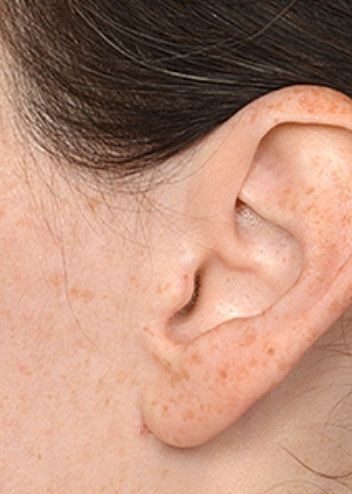


When patients consider facelift surgery, one of their primary concerns is scarring. At our Fayetteville plastic surgery practice, we understand that the true measure of a successful facelift isn’t just the rejuvenation achieved—it’s ensuring that no one can tell you’ve had surgery at all. This is where the precision of helical root incision placement becomes absolutely critical.
The helical root, located at the base of where the ear cartilage meets the face, represents one of the most strategically important areas in facelift surgery. This natural anatomical landmark provides an ideal location for concealing surgical incisions because it sits precisely in the area where skin color and texture naturally transition from facial skin to ear cartilage.
The genius of placing facelift incisions along the helical root lies in working with your body’s natural anatomy rather than against it. This area naturally creates shadows and depth variations that help camouflage even the finest surgical lines. When executed with precision, these incisions become virtually undetectable, even upon close inspection.
The helical root area offers several advantages for scar healing:
Creating truly invisible helical root incisions requires:
Following helical root incision placement, patients typically experience:
When properly executed, helical root incisions heal to become:
The difference between a visible scar and an invisible one often comes down to millimeters in placement and degrees of precision in technique. Board-certified plastic surgeons who specialize in facial rejuvenation understand the nuances of:
While helical root incision placement is crucial for hiding scars, it’s just one component of achieving natural-looking facelift results. The best outcomes combine:
When considering facelift surgery, look for a surgeon who:
If you’re considering facelift surgery and want to learn more about advanced incision techniques that prioritize invisible results, we invite you to schedule a consultation at our Fayetteville practice. During your visit, we’ll discuss your goals, examine your unique anatomy, and explain exactly how we’ll achieve natural-looking results with expertly placed incisions.
Ready to learn more about invisible facelift scars?Call (501) 219-8000 to schedule your consultation today.
This blog post is for educational purposes only and does not constitute medical advice. Individual results may vary. Please consult with a board-certified plastic surgeon to determine if facelift surgery is right for you.
Q: How long do helical root incisions take to heal?A: Initial healing typically occurs within 1-2 weeks, with continued refinement over several months as the scar matures.
Q: Will I be able to wear earrings after facelift surgery?A: Yes, once fully healed, earring wear is typically not affected by properly placed helical root incisions.
Q: Are helical root incisions used in all facelifts?A: Most comprehensive facelifts utilize helical root incisions as part of the overall incision pattern, though the exact placement varies based on individual anatomy and surgical approach.
Q: What can I do to optimize healing of my facelift incisions?A: Following your surgeon’s post-operative instructions carefully, avoiding sun exposure, and maintaining good general health all contribute to optimal scar healing.